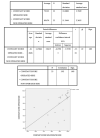Antegrade intramedullary nailing in proximal humeral fractures: results of 23 cases
- PMID: 32555099
- PMCID: PMC7944828
- DOI: 10.23750/abm.v91i4-S.9650
Antegrade intramedullary nailing in proximal humeral fractures: results of 23 cases
Abstract
Introduction: the metaepiphyseal fractures of the proximal humerus represent 5% of all fractures and mainly affect elderly patients. The type of treatment remain controversial. This retrospective study aimed to evaluate the clinic and radiographic results of 23 patients affected by two or three fragments fractures of the proximal humerus with or without metaphyseal extension treated with antegrade intramedullary nailing.
Materials and methods: all patients were clinically evaluated using the "Constant score" (CS) and individual satisfaction was assessed with a visual scale (VS). Moreover, the fracture's healing process and the neck shaft angle (NSA) were assessed radiographically.
Results: the mean follow-up was 72 months (24-120). Clinical evaluation and individual satisfaction were positive in most cases (mean CS 79,39 and VS 3,17). Worse results were observed in patients over 65 years.
Discussion: among the different surgical options intramedullary nailing ensures good fracture stability and high consolidation rate. The entry point through the rotator cuff is of main importance as well as proximal nail positioning and choice of the locking screws length. In this study the functional results of the shoulder are worse in the elderly, who are supposed to have already a degenerated rotator cuff.
Conclusions: antegrade intramedullary nailing should be considered a valid therapeutic option in this type of fractures. The surgical technique may influence functional results, as consequence of iatrogenic damage of the rotator cuff.
Conflict of interest statement
Each author declares that he or she has no commercial associations (e.g. consultancies, stock ownership, equity interest, patent/licensing arrangement etc.) that might pose a conflict of interest in connection with the submitted article
Figures
Similar articles
-
Displaced humeral surgical neck fractures: classification and results of third-generation percutaneous intramedullary nailing.J Shoulder Elbow Surg. 2019 Feb;28(2):276-287. doi: 10.1016/j.jse.2018.07.010. Epub 2018 Nov 12. J Shoulder Elbow Surg. 2019. PMID: 30429058
-
Is antegrade nailing a proper option in 2- and 3-part proximal humeral fractures?Musculoskelet Surg. 2020 Aug;104(2):179-185. doi: 10.1007/s12306-019-00610-5. Epub 2019 Jun 10. Musculoskelet Surg. 2020. PMID: 31183680 Review.
-
[Comparative study of antegrade and retrograde intramedullary nailing for the treatment of humeral shaft fractures].Zhongguo Gu Shang. 2009 Mar;22(3):199-201. Zhongguo Gu Shang. 2009. PMID: 19366103 Chinese.
-
[Unreamed locking intramedullary nailing of humeral fractures--basic evaluation of a patient group].Acta Chir Orthop Traumatol Cech. 2001;68(6):345-56. Acta Chir Orthop Traumatol Cech. 2001. PMID: 11847926 Czech.
-
Intramedullary nailing of the proximal humerus: evolution, technique, and results.J Shoulder Elbow Surg. 2016 May;25(5):e130-8. doi: 10.1016/j.jse.2015.11.016. Epub 2016 Feb 16. J Shoulder Elbow Surg. 2016. PMID: 26895601 Review.
Cited by
-
Clinical outcomes following intramedullary nailing of humerus fractures: a systematic review.JSES Int. 2025 Mar 13;9(4):1021-1028. doi: 10.1016/j.jseint.2025.02.009. eCollection 2025 Jul. JSES Int. 2025. PMID: 40703426 Free PMC article. Review.
-
Locking plate fixation versus intramedullary nail fixation for the treatment of multifragmentary proximal humerus fractures (OTA/AO type 11C): a preliminary comparison of clinical efficacy.BMC Musculoskelet Disord. 2023 Jun 5;24(1):461. doi: 10.1186/s12891-023-06567-8. BMC Musculoskelet Disord. 2023. PMID: 37277746 Free PMC article.
-
External fixation can be an option for proximal humerus fractures Neer 3-4.Acta Biomed. 2020 Dec 30;91(14-S):e2020017. doi: 10.23750/abm.v91i14-S.10979. Acta Biomed. 2020. PMID: 33559622 Free PMC article.
References
-
- Court-Brown CM, Garg A, McQueen MM. The epidemiology of proximal humeral fractures. Acta Orthop Scand. 2001;72:365–71. - PubMed
-
- Benazzo , Ceccarelli , Cerulli , Villani , Sasso . Ortopedia e traumatologia. Milano: Monduzzi Editore; 2010.
MeSH terms
LinkOut - more resources
Full Text Sources
Medical





